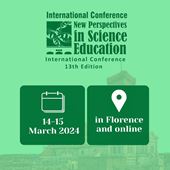Modeling to Enhance Scientific Explanation Construction in Preservice Elementary Teacher Education
Jordi Martí Feixas, Universitat de Vic-Universitat Central de Catalunya (Spain)
Arnau Amat, Universitat de Vic-Universitat Central de Catalunya (Spain)
Abstract
Contemporary views of science education recognize the importance of models in science teaching at all grade levels (Gilbert & Justi, 2016). In elementary school science, models can be used to predict and explain scientific phenomena, although scientific explanation construction is not easy neither for children nor for teachers (Zangori i Forbes, 2013). In order to address this challenge, a scientific teaching method course was designed to develop our preservice elementary teacher’s use of models to construct scientific explanations. Along the course, students wrote several scientific explanations about simple chemical phenomena, while modelling processes were presented and a particulate model of matter was built.
According to Osborne and Patterson (2011), we consider scientific explanations as causal answers to “why” questions. In this study, these scientific explanations, which had been written by students in their science notebooks, are analysed to identify qualitative differences. Our analytical framework is based on the contribution of authors, such as Russ et al. (2008), who argue about the practice of scientific explanations construction. The results show how the quality of the explanations increases, between explanations constructed based on their initial models, and explanations constructed using the scientific model introduced along the course. From our point of view, the model of matter constructed, and specially the introduction of a new entity (the particle) with their properties, becomes a key support to scaffold the process of causal reasoning.
 New Perspectives in Science Education
New Perspectives in Science Education


























